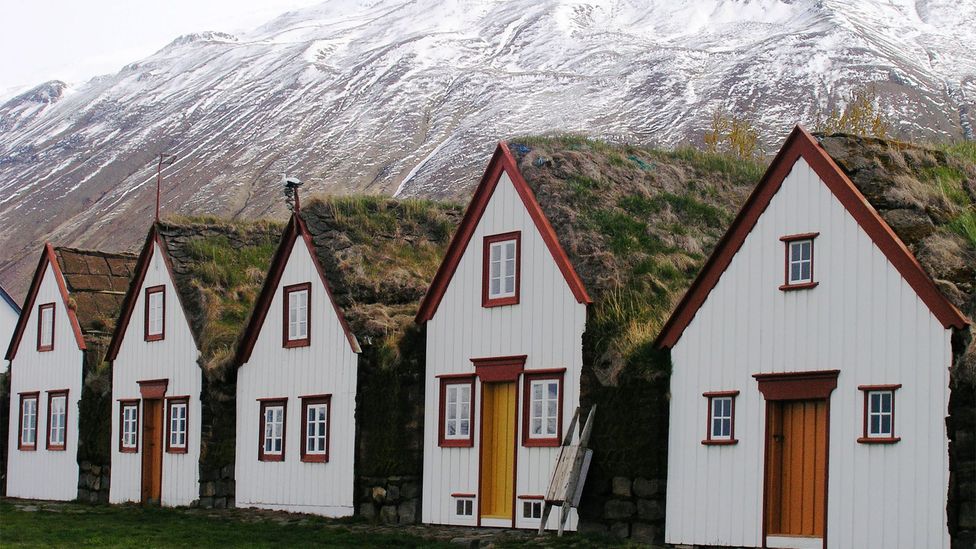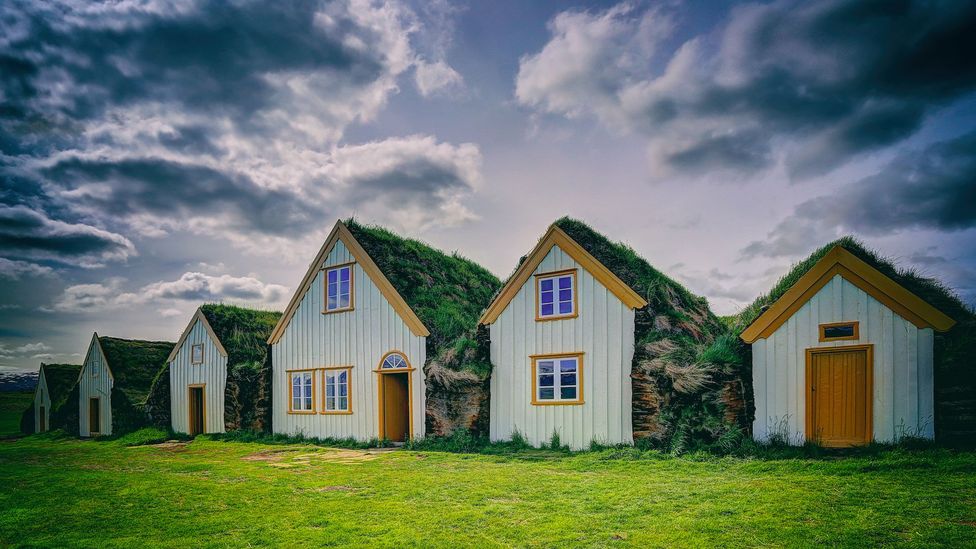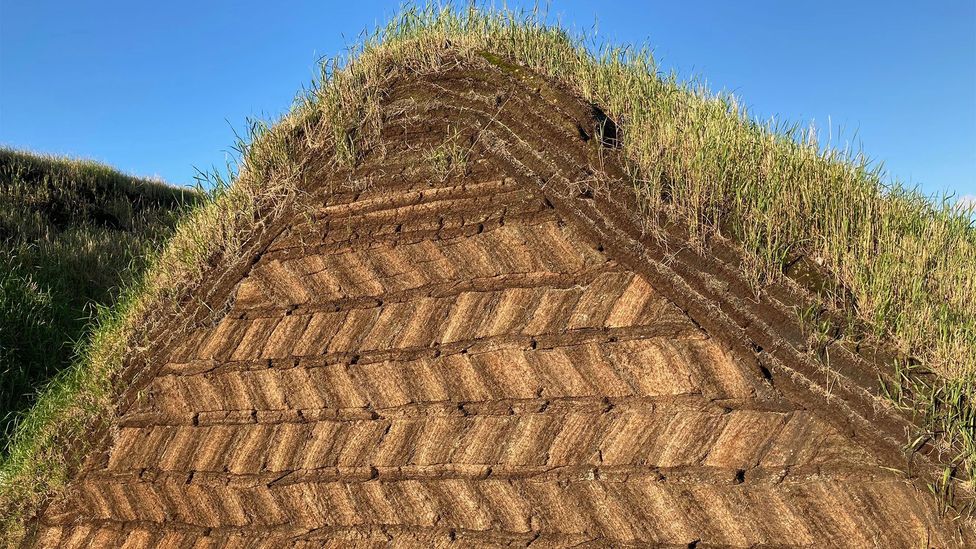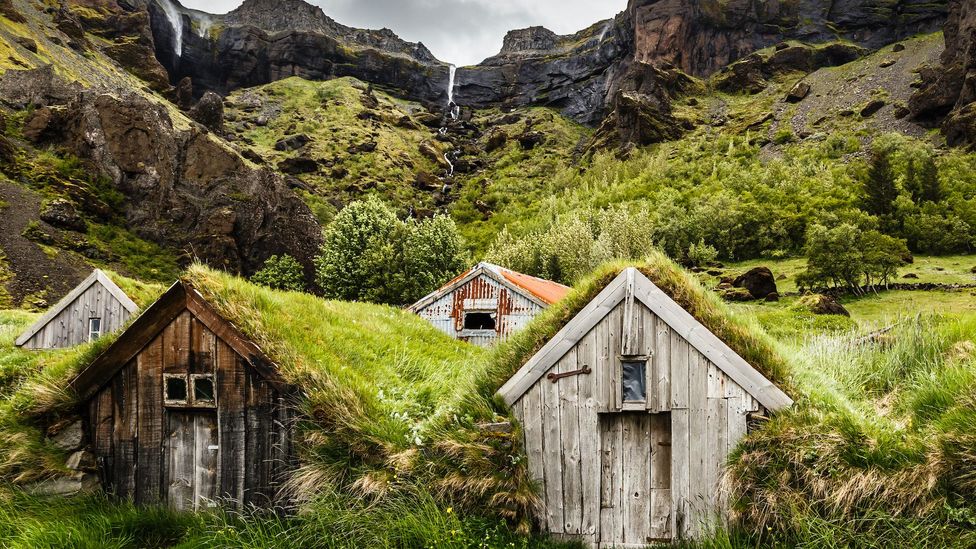With its lonely lava fields, sheer bluffs and stark boulder-strewn plains, Iceland is one of Europe's most barren countries. Across much of the island, the utter remoteness is striking, and that's especially true in the far-flung Northwestern Region, where I had come to learn about how Icelanders were able to settle one of the least hospitable and most volcanically active places on Earth.
Settling Iceland, even for the hardened Norse, was tough back in the 9th Century CE. There were sub-zero temperatures and thick snow cover even on lower-lying ground throughout much of the year. The predominantly rocky nation never yielded the fecund land other European nations did: just one-fifth of it, mostly in the Northwestern Region, is cultivatable to this day. When Norse sailors first spotted the island, Iceland was roughly 30% forested, a low coverage compared to elsewhere in Scandinavia at the time. With limited timber, materials for building houses were hard to come by, especially since the island's basalt rocks were difficult to hew.
All things considered, it's surprising Iceland's settlers even survived. That they did can be attributed to one factor above others: torfbæir (turf houses), which were used for shelter since the days of the first Nordic settlers until the late 20th Century. These dwellings were built around basic timber frames, with blocks cut out of turf (grass and the soil up to 1m thick) arranged over a base layer of rock and packed in to form the structure's walls and roofs. Today, they can still be found across the country, sticking out of the landscape grass-side up like tussocky tents. There are especially good examples open to the public at Glaumbær in the north-west, Laufás in the north and Keldur in the south.

The ingenious design of turf houses helped Nordic settlers survive in Iceland (Credit: Kelly Cheng Travel Photography/Getty Images)
As I arrived at Glaumbær Farm & Museum in the northern fjord of Skagafjordur, the golden evening light tinged the homes' grassy rooftops. Built and enlarged over the 18th and 19th Centuries, and used as a priest's house as well as a farmhouse, Glaumbær is Iceland's most extensive and intact group of turf buildings. The main complex's 13 buildings were huddled together like turf terraced housing, the walls of one touching those of the next. There is a front row of six buildings, each sporting a narrow yellow-and-white-painted wood facade, and a passageway connecting the remaining seven structures leads to the living quarters at the back of the complex. Apart from the painted fronts, each structure's exterior – from the steeply pitched roofs to the walls – is made of turf.
I was being shown around by renowned Icelandic turf house expert Sigridur Sigurdadottir, museum director Berglind Thorsteinsdottir and Helgi Sigurdson, a turf house builder specialising in restoring old turf buildings. Though these homes are synonymous with Iceland's rural idyll, life here, each stressed, was difficult and carved out of precious little.
They invited me to imagine travelling in the freezing cold centuries ago and needing to urgently erect shelter without much timber or workable stone. Driftwood was possibly available on shores several miles away; otherwise, you could build only with what you carried in or cut from the bare ground beneath your feet.
"We had nothing else," Sigurdson told me, wryly. "Turf was all that stood between our ancestors and perishing! It was also what settlers knew: they came from places already accustomed to building with this material."

Glaumbær is Iceland's most extensive and intact group of turf buildings (Credit: Davide Seddio/Getty Images)
She explained that there is a history of building turf dwellings in similar latitudes as Iceland's – notably in northern Norway's Sámi settlements, on the Faroe Islands, in Greenland and Newfoundland, and even as far south as Scotland's Outer Hebrides. But Iceland's stand out from these for a number of reasons: they were in use for a significantly longer period of time, they were used by all classes of people, they served as everything from sheep pens to churches and they are generally better preserved today.
"For us, it is still a living, breathing history," Thorsteinsdottir said. "My grandfather lived in a turf house; many Icelanders did until well into the 20th Century. The last-known occupancy of a turf house as a home here was 1992, and many are still used as farm outbuildings, so these buildings are part of our recent collective memory."
Partly as a result of having been used so recently, torfbæir offer unique historical insights into turf house-building techniques and the living conditions of their occupants. That said, many turf dwellings across Iceland have been modified. Where there was no need to maintain them as part of a residence, authorities rebuilt some for tourism purposes, prettifying them rather than faithfully reconstructing them according to original techniques.
"They are straightforward enough to restore wrongly, but harder to do with historical accuracy," Sigurdson said. "What looks simple to build now was a skilled art, fine-tuned over centuries. There is no manual. When I started restoring these buildings, the only ones who knew how to do it were the local farmers who still had turf building on their lands, so I talked to them to learn techniques."

Turf buildings were built with meticulously measured blocks of packed soil and grass (Credit: Luke Waterson)
Sigurdson learned that a seasoned turf house builder would know timing was everything when cutting their turf for house construction. Late summer or early autumn was best, when conditions were neither too wet nor dry, and when roots bound the soil more firmly.
Building blocks were no uneven lumps, either, but meticulously measured. Torfbæir used two main types of building blocks, both made of packed soil and grass, but shaped differently. Klömbur (clamped building blocks) were angled triangular wedges, with a tapered inward-facing tail stretched across the wall's thickness to knit into the structure and strengthen it. Meanwhile, Glaumbæjarhnausar (Glaumbær blocks), which were rectangular, ran up to 1m across the whole wall's thickness, and when interlaid with strengir (turf strips) made the strongest wall type. As turf continued growing and fusing after placement, structures would become stronger and more weather-resistant over time.
Each structure in a turf building complex was built individually and placed alongside the next, thus cutting costs by sharing walls and increasing the warmth of the innermost structures. These innermost structures would house the living quarters. The Icelandic translation of living quarters, baðstofa or "bath stove", reveals what the key function of these rooms was: providing warmth. From the 9th to the 18th Centuries, these living quarters had no additional heating besides human or animal body heat. They did not need it, as the grass and earth provided insulation from the cold.
"Even with smaller details, they thought of remarkable solutions to the problems posed by the absence of other materials," said Sigurdadottir. "For example, the dark interiors and the smoke in the kitchen helped preserve both foodstuffs and the timber framework. And the windows in the baðstofa: glass was a barely known luxury there until the 1800s, so they stretched sheep stomach and amniotic sacks lining across the frame."

As Icelanders moved from turf houses to modern houses, some began complaining of the increased cold (Credit: Vadim_Nefedov/Getty Images)
Around the beginning of the 20th Century, philanthropists intervened, bemoaning the impracticality and unsavoury living conditions of turf houses. Timber, stone and then concrete, which were more readily available from the mid-19th Century onwards as overseas trade increased, became more commonly used for construction. Yet, it took time for modern homes to supersede turf. Icelanders liked what they knew, and what they knew had worked well for a long time. Many, moving from torfbæir to these new buildings, actually began complaining of the increased cold.
"The importance of Icelandic turf houses goes beyond turf – it is also aesthetics, as part of the national heritage," said Hjörleifur Stefánsson, an Icelandic architect who has studied turf houses for several decades. "Turf houses are not rigid: they are living organisms, changing and renewing constantly. They have their own legacy. The designer William Morris, for example, took inspiration in his work from Icelandic turf houses."
He then showed me pictures of his own turf house, which he is currently building.
"I want to make the landscape glide into the building," he said, "like the turf houses of old."
Heritage Architecture is a BBC Travel series that explores the world's most interesting and unusual buildings that define a place through aesthetic beauty and inventive ways of adapting to local environments.
---
Join more than three million BBC Travel fans by liking us on Facebook, or follow us on Twitter and Instagram.
If you liked this story, sign up for the weekly bbc.com features newsletter called "The Essential List". A handpicked selection of stories from BBC Future, Culture, Worklife and Travel, delivered to your inbox every Friday.
"original" - Google News
October 14, 2022 at 03:10AM
https://ift.tt/qsm4AIL
Turf houses: Iceland's original 'green' buildings - BBC
"original" - Google News
https://ift.tt/n0w4MNB
https://ift.tt/Ea8yR3j
Bagikan Berita Ini














0 Response to "Turf houses: Iceland's original 'green' buildings - BBC"
Post a Comment